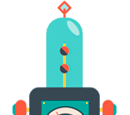Ask Singapore Homework?
Upload a photo of a Singapore homework and someone will email you the solution for free.

Question
junior college 1 | H2 Maths
One Answer Below
Anyone can contribute an answer, even non-tutors.

Good evening!! Can someone pls help me with this? I don’t understand how to go about doing this when it’s all a,b,c,d :-( Thank you so much!
Since we are asked to do differentiation for part (i), we proceed by differentiating the expression via the quotient rule.
Sonia, do you recall how to do the chain, product and quotient rule? These concepts are necessary in the second half of the year when you learn differentiation and integration in greater detail. If not, fret not; I have included my workings below for the differentiation.
After simplifying our expression, we still need to explain why the graph has no turning points. We know that at any turning point, dy/dx = 0. The fact that the graph has turning points means that there is no value of x in the graph for which dy/dx = 0. We simply explain, using our knowledge of perfect squares etc, why we are unable to equate dy/dx to zero no matter what.
For part (ii), we simply follow our result in part (i), except this time with ad - bc = 0, and make some conclusion there. As it turns out, our expression for dy/dx ends in a fraction with the numerator being ad - bc and the denominator being (cx + d)^2. Of course, the numerator is going to be zero regardless of the value of x because there is simply no x in the numerator. We will realise that the only graph which contains dy/dx = 0 at ALL points of the graph is a horizontal line.
For part (iii), we simply put in the numbers for a, b, c and d and make further conclusions.
For part d, we attempt to obtain the intercepts and the asymptotes. The intercepts are easy, since we simply set x = 0 for the y-intercept and y = 0 for the x-intercept. You can follow my workings to see how I write out my asymptotes. I am sure you have questions regarding the asymptoted (yes, because I know I rushed my workings there).
Sonia, let me know if you need more explanation.
See 1 Answer





I don’t quite understand how u did that because normally i would do long division, however, i can’t seem to do long division for this qns..
Yes, we do long division on the (3x - 7) / (2x + 1) expression as we would normally. The quotient is 3/2. The remainder, if you have done correctly, is -7 - 3/2 * 1 = -17/2. You still remember how to do long division from last year correct?
So basically we can do long division on the numbered expressions. Doing on the lettered one in the original question is possible, but the expression gets complicated.
After years of practising with long division and understanding the operations, I tend to be able to divide the expression the way I did in the question (without actually writing out the full division).
Sonia, I’m so sorry for making you confused with my workings!